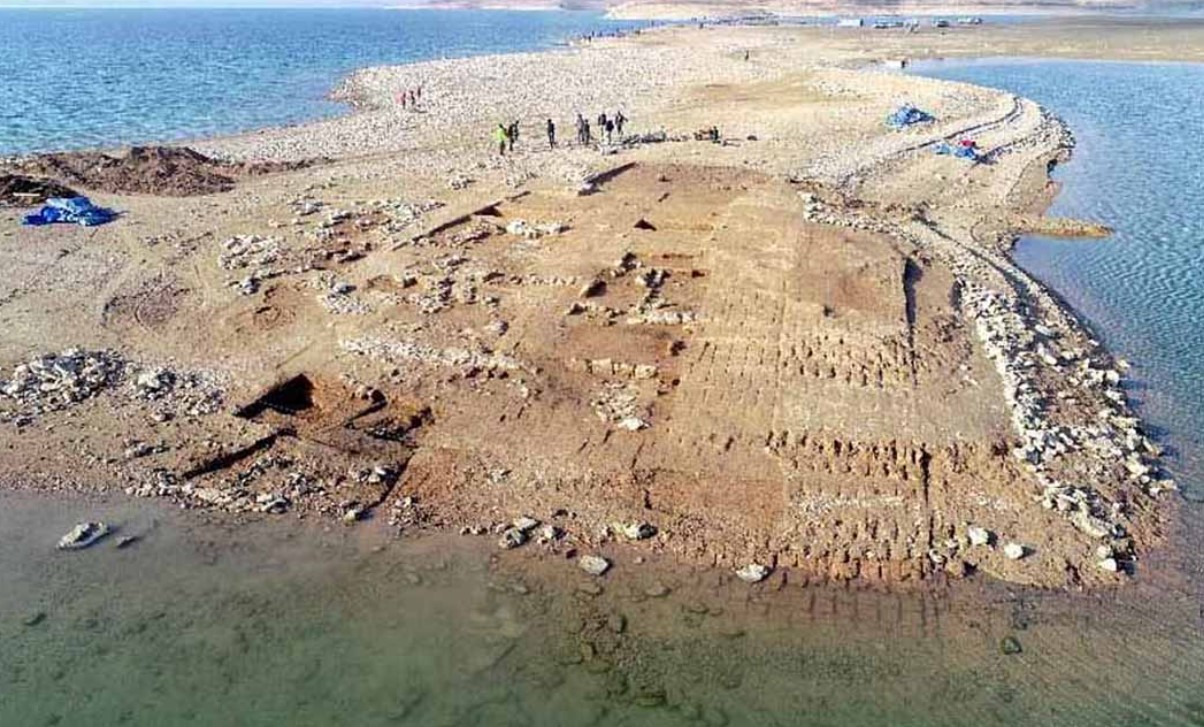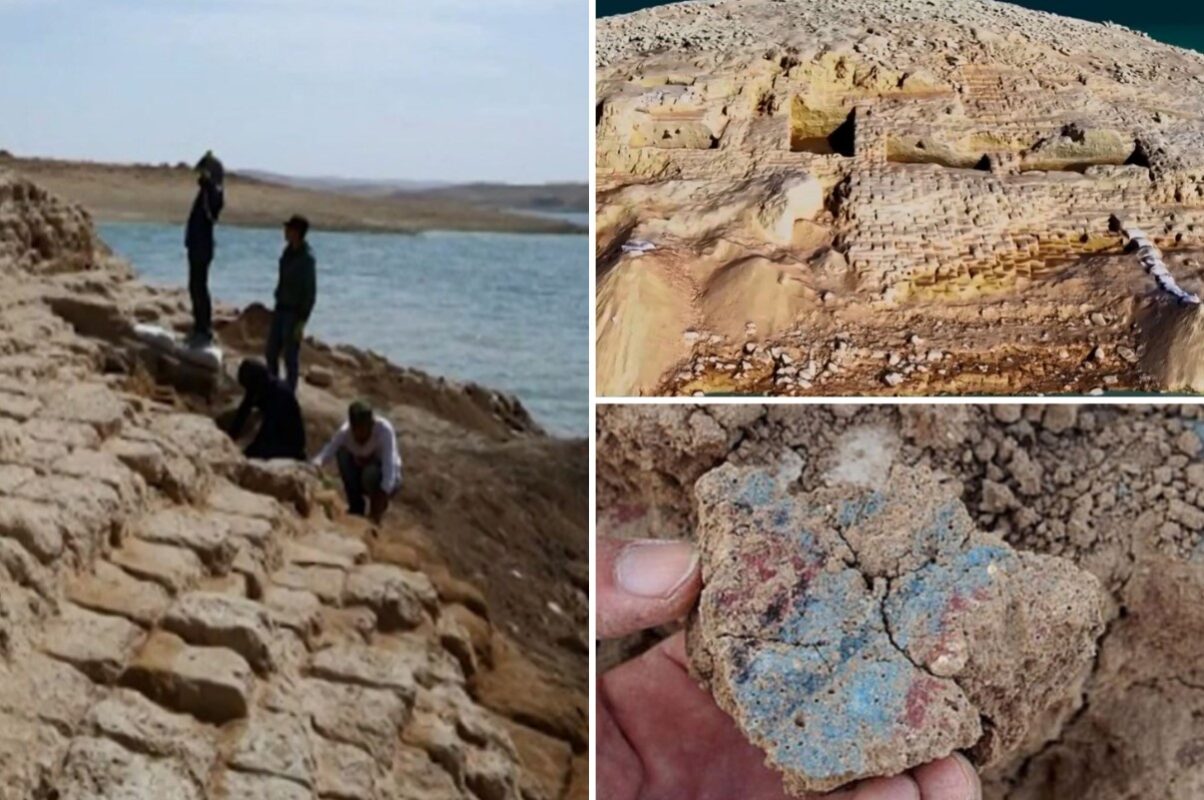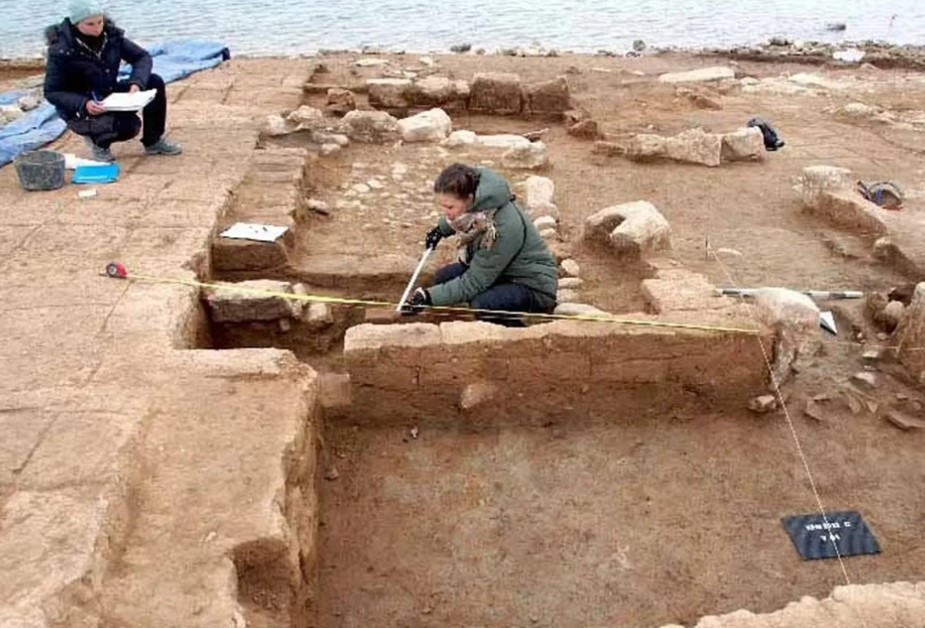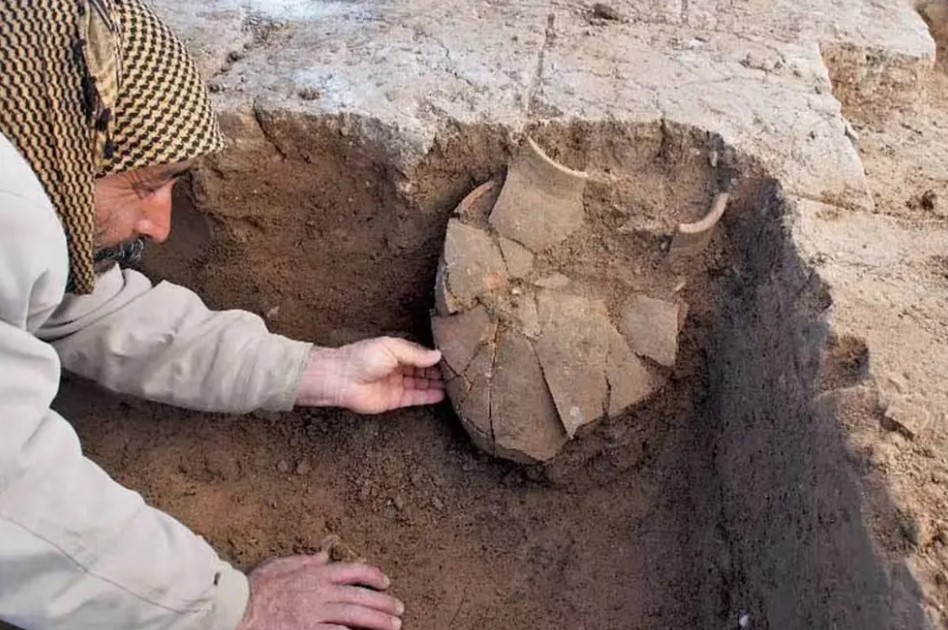A severe drought in Iraq has led to an unexpected and groundbreaking archaeological discovery. As the water levels of the Mosul reservoir receded, an ancient city from the Mitanni Empire, submerged for more than 3,400 years, emerged from the depths of the Tigris River. The rediscovered city, believed to be the ancient settlement of Mitanni City, has sparked considerable interest among archaeologists and historians, offering a rare glimpse into a once-thriving civilization long hidden beneath the riverbed. Here, archeology.dulichvn.net explores the historical significance of the discovery, its impact on our understanding of the Mitanni Empire, and what it reveals about ancient life in the region.
The Rediscovery of Mitanni City: A Glimpse into the Past
Mitanni City was once a prominent urban center in the Mitanni Empire, which thrived around 1400 BC in the region that is now modern-day Iraq. For centuries, this once-important city was submerged beneath the Tigris River due to changes in the region’s geography and the construction of the Mosul Dam. However, due to an ongoing drought, the water levels in the reservoir have dropped significantly, exposing the remains of Mitanni City and offering a unique window into the past.

The Role of the Mitanni Empire
The Mitanni Empire was a significant power in the ancient Near East, known for its advanced knowledge of horse training and chariotry. Their influence extended over much of the Mesopotamian region and parts of modern-day Syria, Turkey, and Iran. Mitanni City was a key city within this empire, and its rediscovery brings new insights into the culture, politics, and daily life of the Mitanni people.
see more: The Mysterious and Abandoned Porto Flavia: A Forgotten Piece of Engineering History
Ancient Urban Design Revealed
As archaeologists continue to explore the site, they are uncovering the layout of the city, including its large structures, streets, and residential areas. The precision of the architecture and urban planning offers clues about the organizational skills of the Mitanni people. The city’s size and complexity suggest it was an important hub of trade, culture, and politics in the ancient world.

The Surprising Survival of Mitanni City
While many ancient cities have been lost to time, the survival of Mitanni City beneath the Tigris River for thousands of years speaks to the resilience of the city’s construction. The unique circumstances that led to its submersion, coupled with the preservation effects of the water, have allowed this city to remain largely intact, offering an exceptional opportunity for archaeologists to study ancient urban life.
The Archaeological Significance of Mitanni City
The discovery of Mitanni City is not only important because it reveals a forgotten city, but also because it provides valuable insights into the advanced techniques of the Mitanni civilization. The site offers a rare opportunity to study the material culture, architecture, and artifacts of the Mitanni Empire.

Artefacts and Inscriptions
As archaeologists excavate the site, they have discovered numerous artifacts, including pottery, tools, and inscriptions that provide a glimpse into the daily life of the people who once inhabited Zakhiku. These findings are shedding light on their social structure, religious beliefs, and interactions with neighboring civilizations.
see more: The Oseberg Ship A Masterpiece of Viking History
A New Understanding of Mitanni Architecture
The architecture of Zakhiku offers valuable insights into the building practices of the Mitanni. Researchers are examining the construction techniques used to build the city’s walls, homes, and public spaces. The precision of these structures suggests that the Mitanni people were highly skilled builders, with a strong understanding of engineering and urban planning.
Evidence of Trade and Cultural Exchange
The artifacts discovered at Zakhiku also suggest that the city was a center for trade and cultural exchange. Items from distant regions, including pottery and jewelry from the Hittites and Egyptians, have been found, indicating that Zakhiku played a key role in the interactions between ancient civilizations.
The Impact of the Discovery on Historical Understanding
The rediscovery of Zakhiku has profound implications for our understanding of ancient history and the Mitanni Empire. This find challenges long-held assumptions about the collapse of the empire and provides new avenues for research into the political and economic structures of ancient Mesopotamian societies.

Rethinking the Fall of the Mitanni Empire
While the reasons for the decline of the Mitanni Empire remain a topic of debate, the discovery of Zakhiku offers new perspectives on the eventual collapse of this powerful civilization. By studying the city’s ruins, historians may be able to uncover clues about how the empire transitioned into the new political order of the region.
The Role of Natural Disasters in Shaping History
The discovery of Zakhiku also highlights the role that natural events, such as droughts and floods, can play in shaping history. The current drought in Iraq may have led to the exposure of the city, but similar natural forces have likely affected the development and decline of ancient civilizations throughout history.

Preserving and Studying Ancient History
The Zakhiku discovery reinforces the importance of archaeological efforts to preserve and study ancient sites. As climate change continues to affect the region, the potential for more discoveries like this increases. It is crucial to invest in preserving these sites for future generations and ensuring that the history of ancient civilizations is understood and appreciated.
Conclusion
The rediscovery of Mitanni City from the depths of the Tigris River is a groundbreaking archaeological find that sheds new light on the Mitanni Empire and its remarkable achievements. From the city’s advanced architecture to its role as a center for trade and culture, Mitanni City offers a rare and valuable glimpse into the ancient past. As further excavations continue, it is likely that even more secrets of the Mitanni Empire will be uncovered, deepening our understanding of this fascinating civilization. This discovery reminds us of the importance of preserving and studying our ancient history, as it continues to inform our present and inspire our future.

CÁC TIN KHÁC
Mark Twain & Olivia Langdon: A 36-Year Love Story Filled with Laughter and Devotion
The Tollund Man: A 2,400-Year-Old Mystery Preserved in a Danish Bog
Skara Brae: Scotland’s Hidden Neolithic Village
Porta Nigra: The Hidden Depths of Trier’s Iconic Roman Gate